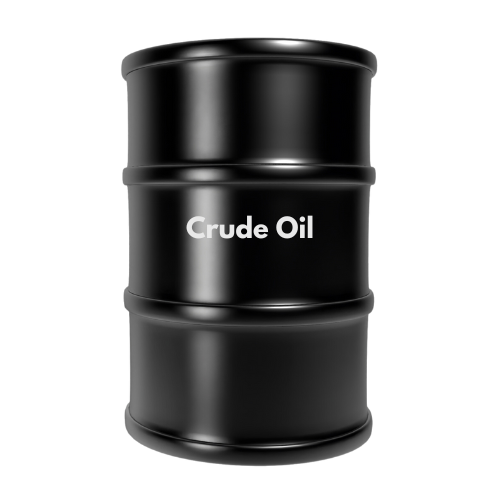Crude Oil

Crude Oil
Product: Crude Oils
Packaging: Barrel
Price: Negotiable – Contact Us
Payment terms: Negotiable, DLC, SBLC, SWIFT MT103
Delivery Terms: FOB (Rotterdam, Houston, Fujairah) or CIF
Min order: MIN 1000,000 – MAX 3,000,000 Barrels x 12 months
Origin: Russian or Non-sanctioned
Inspection: SGS /CIQ at Loading port & Discharging port
OctaGenix Energy supplies barrels worldwide and have access to all the key crude grades. Our global network of trading partners, ideally located in all the major oil trading regions, allows us to identify changing crude oil flows and evolving market dynamics. OctaGenix Energy captures value throughout the supply chain through its relationships with oil producers and resellers, superior logistics capabilities, and strategically located storage and blending facilities.
Crude Oil is one of the most actively traded commodities in the world, and for a good reason. It has the power to slide economies into recession and is constantly present in politics.
Commonly known as Petroleum. It is coming from Latin means Petra: “Rock” + Oleum: “Oil“). It is a naturally occurring, yellow–to-black liquid found in geological formations beneath the Earth’s surface. It is commonly refined into various types of fuels. It’s components of petroleum are separated using a technique called fractional distillation, i.e., separation of a liquid mixture into fractions differing in boiling point by means of distillation, typically using a fractionating column. While hydrocarbons are usually the primary component, their composition can vary from 50%–97% depending on the type and how it is extracted.
It is created through the heating and compression of organic materials over a long period of time. Most of the oil we extract today comes from the remains of pre–historic algae and zooplankton whose remains settled on the bottom of an Ocean or Lake. Over time this organic material combined with mud and was then heated to high temperatures from the pressure created by heavy layers of sediment. This process, known as “Diagenesis”, changes the chemical composition fist into a waxy compound called “Kerogen” and then, with increased heat, into a liquid through a process called “Catagenesis”.
Organic compounds like Nitrogen, Oxygen and Sulphur typically make–up between 6%–10% of it. While metals such as Copper, Nickel, Vanadium and Iron account for less than 1% of the total composition.
Eastern Siberian Pacific Pipeline Oil (“ESPO”) is the 4,188km–long ESPO (Eastern Siberia Pacific Ocean) oil pipeline exports crude oil from Russia to the Asian Pacific markets of Japan, China and Korea.
The pipeline was built by the Russian company Transneft in two phases. It stretches from Taishet to Kozmino, via Kazachinskoe, Skovorodino and Perevoznaya. The first phase of the pipeline was completed in 2009 and the second phase was completed in December 2012. Transneft also operates the pipeline.
Bonny Light Crude Oil (“BLCO”) is a high grade of Nigerian Crude Oil with high API gravity (low specific gravity), produced in the Niger Delta basis and named after the prolific region around the city of Bonny.
The very low sulphur content of BLCO makes it a highly desired grade for its low corrosiveness to refinery infrastructure and the lower environmental of its by-products in refinery effluent.
Russian Export Blend Crude Oil (“REBCO”) is coming in two main qualities, Urals Blend and Siberian Light. Siberian Light has a lower Sulphur content and lower viscosity that Urals Blend. It is a mixture of crude oils consisting of Siberian Light with high Sulphur oils produced in Russia’s European regions.
Light Crude Oil is liquid petroleum that has a low density and flows freely at room temperature, and has a low viscosity, low specific gravity and high API gravity. It is due to the presence of a high proportion of light hydrocarbon fractions. It generally has low wax content. Light crude oil receives a higher price than heavy one on commodity markets. Because, it produces a higher percentage of gasoline and diesel fuel when converted into products by an oil refinery.
Heavy Crude Oil is referred to as “Heavy” because its density or specific gravity is higher than that of light grade. It has been defined as any liquid petroleum with an API gravity less than 20º. Physical properties that differ between heavy grade oils and lighter grades. It includes higher viscosity and specific gravity, as well as heavier molecular composition.
Two of the most commonly traded types of Crude Oil are WTI and Brent. It is worth understanding what the top differences between WTI and Brent Crude are, so as to make informed trading decisions. Both Brent Crude and Western Texas Intermediate are light and sweet, making them ideal for refining into gasoline.
Western Texas Intermediate (WTI) & Brent Crude Oil:
Western Texas Intermediate is extracted from oil fields in the United States. It is primarily extracted in Texas, Louisiana and North Dakota and is then transported via pipeline to Cushing, Oklahoma for delivery.
Brent crude is extracted from oil fields in the North Sea. ‘Brent Crude’ refers to a blend of four crude oils – “Brent”, “Forties”, “Osberg”, and “Ekofisk” which together are known as BFOE.
Brent and WTI have very different sulphur content and API gravity, which can directly affect the price of the oils.
While WTI has a sulphur content of 0.24%, Brent has a sulphur content of 0.37%. The lower the sulphur content of the oils the ‘sweeter’ the oil and the easier it is to refine. Both WTI and Brent are considered sweet crude.
The gravity of the oils is rated on a scale from 10 to 70, where the higher the number the less dense the oil. To put this in perspective, if the API is higher than 10 the oil will float on water and if it is lower than 10 the oil will sink. Both Brent and Crude are relatively light oils
For latest prices please send an email to energy@octagenix.com
